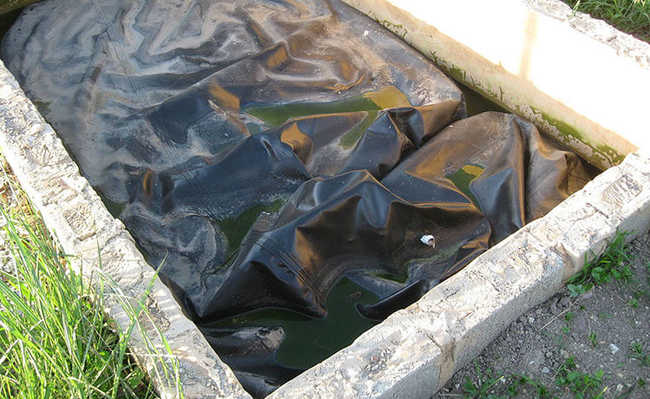Types of photovoltaic systems: on-grid and off-grid
Understand all about their differences and specifications

Have you ever thought of a more sustainable way to get energy? One of the alternative and renewable sources that is growing and gaining more space among Brazilians is solar. Brazil is an excellent market for the energy sector, as the average solar radiation that falls on the country's surface is up to 2300 kilowatt-hours per square meter (kWh/m²), according to Cepel's Solarimetric Atlas.
A photovoltaic solar energy system (or “solar energy system” or even “photovoltaic system”) is a model in which the components of your kit work in order to capture solar energy and convert it into electricity. The energy produced can then be used to supply the electricity grid on a large scale, as happens in solar plants (commercial energy sector), but it can also be generated on smaller, residential scales (solar energy for domestic use). In addition to the solar system for generating electricity, there is also one for thermal energy, which aims to use solar radiation to heat water.
Despite some incentives for the use of photovoltaic energy, which is a type of renewable energy (important as it allows for a reduction in concerns regarding the reservoirs of hydroelectric plants, which in recent years have suffered from lack of rain and excessive sunshine ), some doubts can still be observed among consumers and those interested in applying this system in their homes or in their businesses. How does it work? What is the cost of its installation? Is the financial return beneficial? Where to buy? The questions are many. Some of the answers to these questions can be found in our article on photovoltaic system components, which you can find by clicking here.
To decide how to proceed with the purchase of components for your own energy system, the first thing you should know is that there are two types of photovoltaic systems: those connected to the grid (called On-Grid or Grid-Tie ) and those isolated network or autonomous (Off-Grid).
For a more conscious choice of the system appropriate to the conditions of your residence and that is more financially advantageous, it is necessary to know the positive and negative points of each one of them, in addition to their specificities.
We then separate a series of specific characteristics, advantages and disadvantages of each of the systems (in addition to individual information about each of the components) to facilitate this choice. Check out:
Off-grid
These are autonomous systems, independent of the electricity distribution network, which are supported by batteries, which are their storage devices.
They are made up of solar panels, cables and a support structure, which together make up the energy generation block; inverters and charge controllers, which form the power conditioning block; and the batteries themselves, which are from the storage block.
Used for specific and local purposes, such as pumping water, electrifying fences and light poles, small systems have an energy capacity ranging from 1.5 kilowatt-peak (kWp) to 20 kWp, and large ones, 20 kWp at 1 MWp.
The excess energy produced is stored in the batteries and used by the system in times of little or no sunlight, such as at night. Thus, as the batteries are the system's backup energy source, you should think about purchasing batteries with enough energy storage space to maintain the residence, based on the house's demand and local weather conditions (in places with low incidence of light, the battery must have the capacity to store large amounts of energy in times of sunshine, so that it can be used during periods without light).
If you want to know more about the off-grid photovoltaic system, click here.
on-grid
Also called grid-tie, this type of photovoltaic system must necessarily be connected to the energy distribution network. They are more efficient than off-grid systems and do not require the use of batteries and charge controllers, which makes your kit cheaper.
In the case of on-grid systems, inverters will have, in addition to the traditional function of converting direct current (DC) into alternating current (AC), the function of synchronizing the system with the public grid. But why?
In the on-grid system, as it does not have a storage device, all the excess energy produced (that which is not used by the home or the company) is sent back to the conventional electricity grid. With this, the electric energy meter clock rotates in the opposite direction and this surplus is converted into energy credits, which can be used at times when demand is greater than production, within a period of up to 36 months.
With this, even though the residence still uses the conventional energy network, there is a saving on the bill: you only pay the difference between what is consumed and what is produced.
This type of system is regulated by normative resolution No. 482 of the National Electric Energy Agency (Aneel), of April 17, 2012, which defines the energy compensation mechanism.
Another positive point is that these credits obtained can be used by other consumer units, as long as they have the same holder and are part of the same distribution network.
If you want to know more about the on-grid photovoltaic system, click here.
In short…
The table below presents a summary of the advantages and disadvantages of each photovoltaic system to help you choose the most appropriate for your case and your pocket:

If you want to know more about installing your photovoltaic energy system, click here.
In addition to photovoltaic energy being considered clean as it does not generate waste beyond the plates and does not harm the environment, it is one of the most promising renewable resources in Brazil and in the world, as it causes minimal environmental impacts and reduces the carbon footprint of consumers - will be minimizing their emissions by opting for a way of obtaining energy with low harmful potential.
The payback time on the investment in the photovoltaic system varies and depends on the amount of energy the property requires. Nevertheless, the advantage of the home system is savings: once this payback time is reached, a good deal of money can end up going into savings rather than being spent in a way that doesn't bring much benefit.
Remember to ensure that the components used are certified by the National Institute of Metrology, Quality and Technology (Inmetro), which implemented Ordinance No. 357 in 2014, with the objective of establishing rules for the generation equipment. Photovoltaics.
Unfortunately, there are still few incentives and financing lines for this type of energy in Brazil, which are still difficult to access and have little applicability. It is expected that, with the increase in the consumption of photovoltaic energy systems, new incentives, more applicable and accessible to common housing, will emerge.










